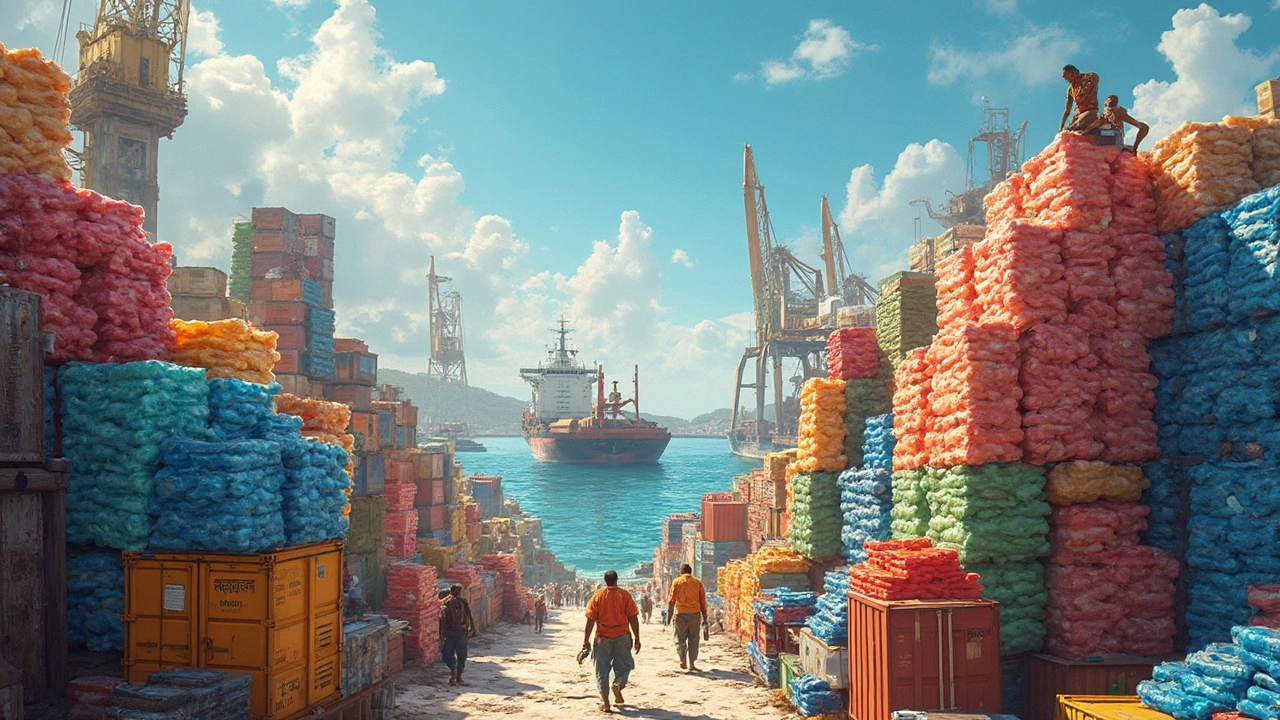- Where Are Dr Reddy's Drugs Manufactured? Inside India's Pharma Powerhouse Apr 20, 2025
- Fastest Growing Pharma Company in India: Latest Rankings, Data & Trends 2025 Jul 7, 2025
- Who is the King of Textiles? Apr 16, 2025
- Number One Selling Item in Manufacturing: Insights and Ideas Nov 28, 2024
- How to Start a Manufacturing Business from Zero: Step-by-Step Guide for Beginners Nov 17, 2025
Global Trade Insights: Manufacturing, Exports & Market Trends
When you think about global trade today, the first thing that pops up is how quickly products move from factories to shoppers worldwide. From Indian steel to American cars, every item tells a story about demand, cost and policy. In this guide we pull together the most useful tips you need to understand the current trade climate.
Key Drivers Behind Today’s Trade Flow
Two forces dominate the scene: technology and policy. Automation in factories cuts production time, while trade agreements decide where tariffs sit. For instance, India’s push for AI chip manufacturing is reshaping its export mix, and recent US‑China talks are shifting where electronics are sourced. Knowing which side moves faster helps you pick the right market.
How Manufacturers Adapt to Shifting Rules
Smart manufacturers aren’t waiting for the next regulation; they’re already tweaking their supply chains. A car maker in India may source batteries from a neighboring state to dodge high logistics costs, while a pharma firm keeps a backup plant abroad to avoid sudden export bans. These practical moves keep output steady and prices competitive.
Export‑focused businesses also watch currency swings. A weaker rupee means Indian goods become cheaper overseas, boosting demand for textiles and auto parts. On the flip side, a strong dollar can pressure US manufacturers, pushing them to outsource more. Spotting these patterns early lets you time your sales pushes.
Logistics is another hidden cost. Shipping containers fill up fast during peak seasons, driving freight rates up. Companies that lock in rates early or use inland rail get a price edge. Likewise, firms that build local warehouses near ports cut handling time, which translates to faster delivery for customers.
Finance plays a role too. Small scale producers often struggle with credit, which stalls growth. Programs like India’s MSME loans aim to plug that gap, but the real trick is aligning cash flow with order cycles. When you understand the financing landscape, you can negotiate better terms with suppliers.
Consumer trends are reshaping what gets shipped. Sustainable products are in higher demand, so manufacturers are adding eco‑friendly steps—like using recycled steel or low‑energy processes—to appeal to green‑minded buyers. Highlighting these moves on product pages can win contracts in Europe and North America.
Finally, keep an eye on data sources. Trade databases, customs reports and industry newsletters give you real‑time snapshots of volume shifts. A quick weekly glance at import/export stats can reveal emerging hotspots before they become mainstream.
Bottom line: global trade isn’t a static map, it’s a living network that changes with policy, tech and consumer taste. By watching the right signals—cost, logistics, finance and sustainability—you’ll stay ahead of the curve and make smarter decisions for your business.
Plastic Exporter Number One: Who Tops the Global List?
- Aarav Sekhar
- May 29, 2025
Curious about which country leads the world in plastic exports? This article breaks down the current number one exporter, explains how they got there, and looks at what drives their plastic industry. You'll also get a peek at surprising facts behind the numbers and things that companies should watch for when dealing with global plastic trade. Want to know how this impacts your business or choices? It's all covered here.
